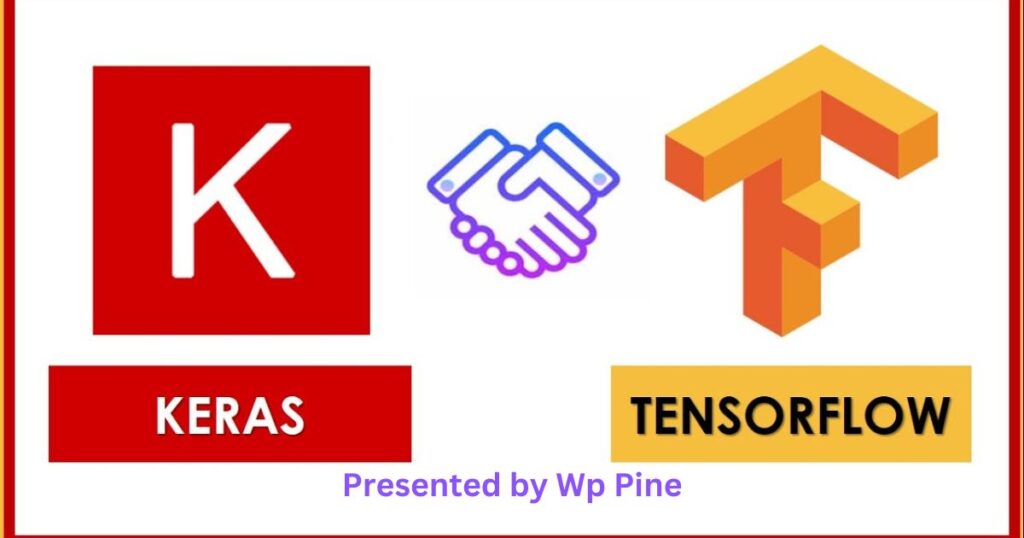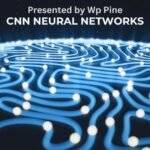When I first started learning about Deep Learning, I realized it’s like teaching a computer to think like a human brain—well, almost. It’s a subset of Machine Learning (ML), and what makes it unique is its use of neural networks with multiple layers (hence “deep”). These networks mimic the structure of our brains to process data and make decisions.
That’s how I started with understanding the intuition behind it before jumping into code.
- Analogy: Think of Deep Learning as a child learning to recognize animals. The child sees hundreds of images of cats and dogs and learns patterns (like whiskers, tail, or ears) to identify them. A deep learning model does the same but with mathematical layers.
Concepts of Deep Learning
Before getting involved into tools like Keras and PyTorch, let’s take an overview of some fundamentals of DL:
Neural Networks
- Neurons: Basic units that take inputs, process them, and pass outputs.
- Layers: Neural networks have an input layer, hidden layers, and an output layer.
- Weights and Biases: These are values that the model learns to make predictions.
- Activation Functions: Decide whether a neuron should be activated (like ReLU, Sigmoid).
Training Process
- Forward Propagation: Data flows through the layers to produce an output.
- Loss Function: Measures how wrong the predictions are.
- Backpropagation: Adjusts weights and biases to minimize the loss.
- Optimization: Algorithms like Gradient Descent help improve the model.
Important Terminology
- Epochs: Full passes through the dataset.
- Batch Size: Number of samples processed at a time.
- Learning Rate: Determines how much the model adjusts its weights.
Use cases of Deep Learning in our daily life
When I tried simple ML models like Linear Regression, they worked well for straightforward problems. But when I started getting deeper into this the data started to become more complex (like images or speech), and these models were not enough to get the desired results. These are some real use cases of Deep Learning in our daily life:
- Computer Vision: Recognizing faces, objects, or scenes (“Face Detection, Emotion Recognization”).
- Natural Language Processing (NLP): Understanding text or speech (“Google Lens”).
- Reinforcement Learning: Teaching machines to self-learning or make decisions (Games like “Chess”, and “Battle Games”).
Introducing PyTorch and Keras to you guys
Keras and PyTorch are two of the most prominent tools in the deep learning ecosystem. While Keras simplifies the development of neural networks with its high-level APIs, PyTorch provides the power and flexibility needed for complex computations and production-ready applications. Let’s break them down in detail.
What is PyTorch?
PyTorch is an open-source machine learning library developed by Facebook’s AI Research Lab (FAIR). It is widely used for research and production in the fields of machine learning and deep learning. PyTorch offers dynamic computation graphs and an intuitive, Pythonic interface, making it a popular choice among researchers and practitioners.
My Techniques to Learn PyTorch
- PyTorch Basics: Learning Tensors and Autograd
- PyTorch tensors are the fundamental data structures for computation.
- Build from Scratch: Created Custom Training Loops
- Learned to manually define training loops for complete control over model training.
- Experimented with Pre-trained Models (PyTorch Hub)
- Used PyTorch Hub to experiment with pre-trained models for transfer learning.
What is Keras?
Keras is an open-source high-level neural networks API written in Python. It acts as an interface for building and training deep learning models. Originally designed to work with various backend engines like TensorFlow, Theano, or CNTK, Keras has become an integral part of TensorFlow since TensorFlow 2.0.
My techniques to learn Keras
- First Steps: Built my first neural network using just a few lines of code.
- Datasets: Used datasets like MNIST (handwritten digits) to get started.
- Trial and Error: Tweaked hyperparameters like learning rate and layers.
How Keras Compares to PyTorch
Both Keras and PyTorch are powerful frameworks of deep learning, but they are different in design philosophy, ease of use, and flexibility. Here’s a detailed comparison to help you decide which is best suited for your needs:
| Aspect | Keras | PyTorch |
|---|---|---|
| Ease of Use | High: Simple, user-friendly API. Ideal for beginners. | Moderate: Pythonic, but requires deeper knowledge of ML concepts. |
| Flexibility | Limited: Abstracts much of the complexity, less customizable. | High: Offers fine-grained control over every aspect of model building. |
| Development Philosophy | High-level, declarative: Focus on ease and speed. | Low-level, imperative: Focus on flexibility and experimentation. |
| Community Support | Extensive, backed by TensorFlow; large beginner audience. | Strong, especially among researchers and advanced users. |
| Dynamic vs. Static Graphs | Static by default; uses TensorFlow’s graph-based execution. | Dynamic: Builds computational graphs on-the-fly, aiding debugging and experimentation. |
| Performance | Good for most use cases but can require optimization for complex tasks. | Exceptional performance for custom and large-scale tasks. |
| Model Deployment | Integrated with TensorFlow for production-grade deployment. | TorchScript allows for exporting models for production, but slightly less mature. |
| Pre-trained Models | Vast collection of pre-trained models and layers. | Comprehensive library via TorchHub and torchvision. |
| Use Cases | Rapid prototyping, small-to-medium scale projects. | Research, experimentation, and large-scale systems. |
Building Deep Learning Models with PyTorch
PyTorch emphasizes flexibility and control over the neural network architecture:
Define a Model
- Create a custom neural network class by inheriting from
torch.nn.Module. - Define layers in the
__init__method and specify forward propagation in theforwardmethod.
import torch
import torch.nn as nn
class NeuralNetwork(nn.Module):
def __init__(self):
super(NeuralNetwork, self).__init__()
self.layer1 = nn.Linear(784, 128)
self.relu = nn.ReLU()
self.layer2 = nn.Linear(128, 10)
self.softmax = nn.LogSoftmax(dim=1)
def forward(self, x):
x = self.layer1(x)
x = self.relu(x)
x = self.layer2(x)
x = self.softmax(x)
return xDefine Loss Function and Optimizer
- Choose a loss function (e.g., cross-entropy, mean squared error) from
torch.nnmodule. - Select an optimizer (e.g., SGD, Adam) from
torch.optimmodule to update model parameters.
model = NeuralNetwork()
criterion = nn.CrossEntropyLoss()
optimizer = torch.optim.Adam(model.parameters(), lr=0.001)Training the Model
- Iterate through batches of data, compute loss, perform backpropagation, and update weights.
for epoch in range(num_epochs):
for images, labels in train_loader:
optimizer.zero_grad()
outputs = model(images)
loss = criterion(outputs, labels)
loss.backward()
optimizer.step()Building Deep Learning Models with Keras
Keras provides a streamlined API for building neural networks with TensorFlow backend:
Define a Model
- Use
SequentialAPI to stack layers or use functional API for more complex architectures.
from tensorflow.keras.models import Sequential
from tensorflow.keras.layers import Dense, Activation
model = Sequential([
Dense(128, input_shape=(784,), activation='relu'),
Dense(10, activation='softmax')
])Compile the Model
- Compile the model by specifying loss function, optimizer, and metrics to monitor during training.
model.compile(optimizer='adam',
loss='sparse_categorical_crossentropy',
metrics=['accuracy'])Training the Model
- Fit the model to training data using
fitmethod, specifying epochs, batch size, and validation data.
model.fit(train_images, train_labels, epochs=10, batch_size=32, validation_data=(val_images, val_labels))Choosing Between PyTorch and Keras
- PyTorch: It is good for research or any type of experimentation due to the dynamic computation graph and flexibility when building models.
- Keras: The interface is user-friendly, and also, it goes very well with TensorFlow, so it is suitable both for prototyping and production-level deployment.
In Short
Building deep learning models with PyTorch and Keras offers unique advantages tailored to the specific requirements of your project and your level of expertise. PyTorch provides unparalleled flexibility, making it ideal for researchers and developers who need complete control over their models. On the other hand, Keras is celebrated for its ease of use and rapid prototyping capabilities, making it a great choice for those prioritizing simplicity and speed. By leveraging the strengths of both frameworks, you can tackle complex artificial intelligence challenges effectively and contribute meaningfully to the advancement of deep learning.
Explore their features and experiment with different architectures to unlock their full potential. Whether designing intricate neural networks or deploying scalable models, both PyTorch and Keras empower you to create robust solutions tailored to your applications.
Additional Resources
For further reading on Deep Learning best practices and tools, consider exploring the following resources:
- Learn more about DL from Deeplearning.ai
- Learn the DL step by step from simplilearn.com
- Deep Learning for beginners by Wppine
- Transfer Learning work in Deep Learning by Wppine
- A deep dive into RNN by Wppine
- A deep dive into CNN by Wppine




Pingback: Learn How Recurrent Neural Networks Works For Data Analysis